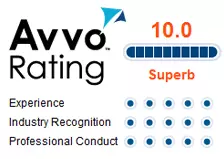Any DUI lawyer who has handled more than a couple dozen Michigan drunk driving cases knows that it is important to know how much alcohol was consumed and how this amount of alcohol impacted his client’s blood alcohol level at the time he or she was driving.
But the driver’s roadside breath test is inadmissible, so it is only the one at the station that counts, and this test is usually 45 minutes to several hours removed (later) from the driving. Because of this, establishing blood alcohol calculations at a point earlier in time can be one of the most critical components in a drunk driving case. Such calculations involve the absorption, distribution and elimination of alcohol, or more broadly, the metabolism of alcohol.
These backwards-looking calculations are called retrograde extrapolation. This topic has been covered previously in the following blogs:
- Five Reasons Retrograde Extrapolation Should Not Be Allowed In DUI Cases
- Retrograde Extrapolation in Michigan Drunk Driving Cases
- Using Software to Assist the Jury in Understanding Alcohol Metabolism Calculations
In addition to retrograde extrapolation, a DUI lawyer is also frequently faced with the question of the number of drinks represented by the driver’s chemical test results. Often the test result will be far higher than it should be based on the amount of alcohol actually consumed.
All of these calculations require a thorough understanding of alcohol metabolism, and is therefore a challenging task not only for the DUI practitioner, but also for the expert toxicologist.
For example, in order to determine the bodily alcohol content at the time of the driving a relatively complicated scientific formula known as the “Widmark formula” must be used. While other scientists have updated and improved the Widmark formula, they are typically ignored by expert toxicologists in favor of the Widmark formula. By relying on one single formula to answer questions related to the driver’s bodily alcohol content, the state expert is failing to account for potential errors in their interpretation – errors which could lead to a wrongful conviction.
Recently, in an effort to “reduce the occurrence of wrongful convictions” Congress authorized the National Academy of Sciences (NAS) to conduct a study on forensic science in an effort to identify needs, make recommendations, and disseminate best practices and guidelines concerning the collection and analysis of forensic evidence to help ensure quality and consistency in the use of forensic technologies and techniques.
The NAS report to Congress in February 2009 cites the lack of standard reporting and testimonies by many forensic laboratories in the United States as a major concern. The report states that “forensic reports, and any courtroom testimony stemming from them, must include clear characterizations of the limitations of the analysis, including measures of uncertainty in reported results and associated estimated probabilities where possible.”[i]
It is the DUI defense lawyer’s responsibility to ensure that his clients are receiving justice fairly and that the science is honestly and accurately applied to his client’s case.
One excellent product to assist DUI lawyers in this endeavor is the BAC Tracker® software. The unique feature of this software is its ability to report potential errors in the final estimated result thus providing more scientifically accurate estimations – and, at times, a larger range of what the actual bodily alcohol content was at the time the driver was operating the vehicle.
The software helps the DUI lawyer because using allows graphic demonstrations of this complicated and scientifically detailed information, including the existence of variations in blood alcohol estimations. It is also possible to use the software to prepare a concise and easily understandable report. But are great aids to the DUI lawyer in trial.
The software was recently updated and greatly improved. The software is easier to install, has a more user-friendly interface, and all reports can be generated in PDF format. Additional changes include:
- Customizable defaults for unit measurements, absorption rates, elimination rates, graphical output display, and user defined standard drinks
- User defined “time of interest” to calculate the BAC according to the particular scenario
- User defined elapsed times for drinking scenarios
- Customizable, real time display instead of relative time elapsed in drinking scenarios
- Customizable reports with the option to bear the logo of the user’s organization
- Expanded drink database containing common alcohol beverages from around the world
The reports generated by the BAC Tracker® software will aid the DUI lawyer in understanding the science behind the numbers. It will also assist the jury in understanding these issues, and will in this way aid in obtaining not guilty verdicts in court.
Get a FREE confidential CASE EVALUATION on your Michigan OWI/OWVI/DUI by calling (248) 306-9159 , or filling out this consultation request form. Call now, there’s no obligation!
[i] Strengthening Forensic Science in the United States: A Path Forward, Committee on Identifying the Needs of the Forensic Sciences Community; Committee on Applied and Theoretical Statistics, National Research Council, ISBN: 978-0-309-13130-8 (2009)









